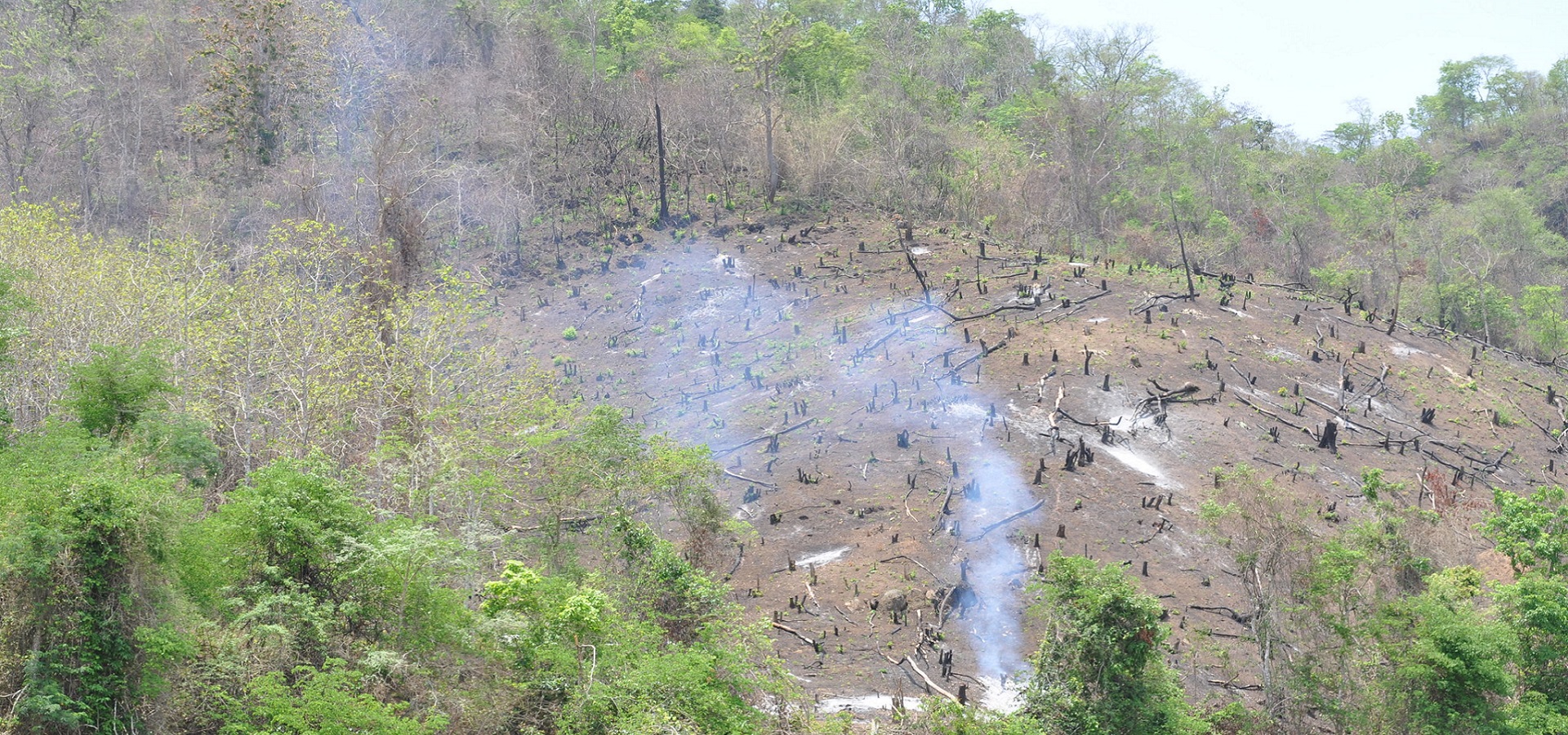Last year, Brazil made international headlines for the devastating forest fires in the Amazon and their impact on the world’s vital oxygen lungs. Many governments – especially from Europe – were quick to condemn the deforestation of the Amazon that had been increasing rapidly since far-right President Bolsonaro took office in January 2019. Rebecca Bertram takes a closer look.

Deforestation for harvesting soy is a massive environmental and climate problem (CC BY 2.0, shankar s.)
According to a recent study, published in the journal Global Environmental Change the governments of the European Union themselves bear considerable responsibility for Brazil’s deforestation rate thanks to their import of large quantities of soy. Soy is one of Brazil’s main commodities, with exports exceeding 33 billion USD in 2018, and ever more forest areas being eroded and turned to soy production.
For the study, a research team from Germany, Spain and Sweden examined how Brazil’s soy production and subsequent deforestation intertwined with international soy trade between 2010 and 2015. Greenhouse gas emissions caused through deforestation were a major driver of climate change in Brazil, accounting for 44 percent of the country’s total carbon emissions in 2018. While the Amazon has seen a moratorium on soy-induced deforestation since 2006, the authors of the study focused on the Cerrado region in the southern and central parts of the country – widely referred to as Brazil’s “last agricultural frontier” – which has seen some of the highest deforestation rates in the country. It seems that the original Amazon soy moratorium, instead of limiting soy production simply shifted it to new areas.
Between 2010 and 2015, carbon emissions from Brazilian soy exports are estimated at 223 million metric tons of carbon dioxide. China was the biggest importer of Brazilian soy accounting for 51 percent of carbon emissions, closely followed by the European Union with 30 percent. But while China imported soy from already eroded fields in the southern parts of the Cerrado region, the imports going to the European Union came largely from newly deforested plantations in the northern parts of Cerrado, making Europe’s carbon footprint per unit of soy larger than China’s.
The study points out that eroding forests for new soy plantations is not the only factor determining the carbon footprint of soy exports. Another is the distance soy has to travel and the mode of transport to reach Brazil’s coast to be shipped abroad. For exports to the European Union, long haul trucks are needed to carry the crop over long distances. Transportation thus makes up a staggering 60 percent of the total carbon emissions of the soy trade.
Most of Brazil’s soy exports to the European Union are not for personal consumption but for feeding livestock and for biofuels production. The EU has undergone an impressive growth in biofuels over the years, producing 649.8 petajoules in 2019, an increase of 620.6 petajoules since the turn of the century. The EU’s goal is to reach 14 percent of biofuels in its transportation sector by 2030 (compared to 8.1 percent in 2018), a goal that can only be reached through imports.
Biofuels are often presented as a way to decrease carbon emissions. In fact, they can have twice the carbon footprint of fossil fuels. The EU-Mercosur trade deal concluded last year is likely to increase soy imports from Brazil to the EU even further since it cuts or even eliminates duties on exports of soy. The commodity thus becomes even more attractive for biofuels producers in Europe and leads to further increases in Brazil’s deforestation.
Condemning Brazil’s current abysmal environmental record, while fully justified, conveniently obscures Europe’s own role in the international soy trade and its interconnection with Brazil’s agribusiness. It is on this aspect that the debate over the EU’s biofuels strategy must now focus. The findings of the German-Spanish-Swedish research team that exposed the true carbon footprint of European soy imports from Brazil are a good point to start.
The Cerrado, where the soy is grown, is dry scrubland not rainforest. Its loss to agriculture is a pity, but not dramatic. The more urgent need is to protect the rainforest further north, where the threats come from cattle raising, logging, and wildcat mining.